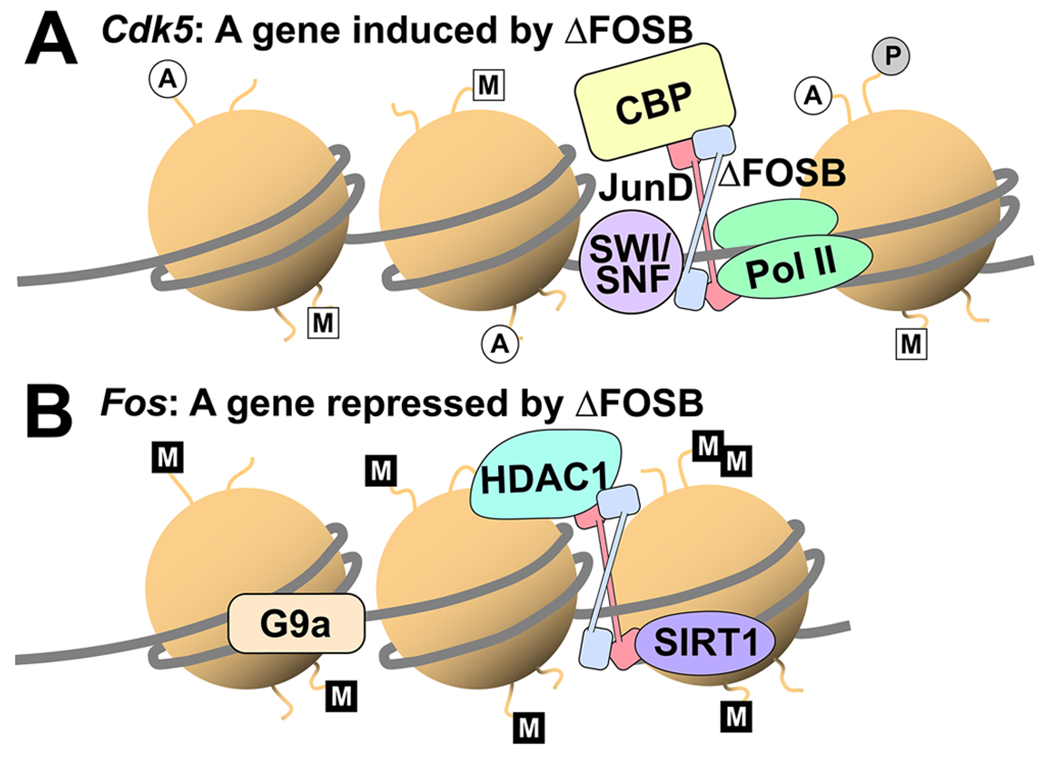Figure 3.

ΔFOSB as a transcriptional activator and repressor. (A) At some genes, like Cdk5, ΔFOSB/JUND (blue and pink) acts to recruit histone acetyltransferases like CREB binding protein (CBP), promoting histone acetylation (white circles) and binding of the SWI/SNF chromatin remodeling complex, which allows greater separation of nucleosomes. The resulting permissive chromatin conformation, including the activating trimethylation of H3 at lysine 4 (white squares) and histone phosphorylation (gray circle), allows binding of RNA polymerase (Pol II) and the basal transcription complex with subsequent gene expression. (B) At other genes, such as Fos, ΔFOSB/JUND recruits histone deacetylases like HDAC1 and sirtuin-1 (SIRT1), resulting in reduced histone acetylation and allowing histone methyltransferases like G9a to dimethylate H3 at lysine 9 (black squares). This results in a repressive chromatin state in which the gene is not readily expressed.
